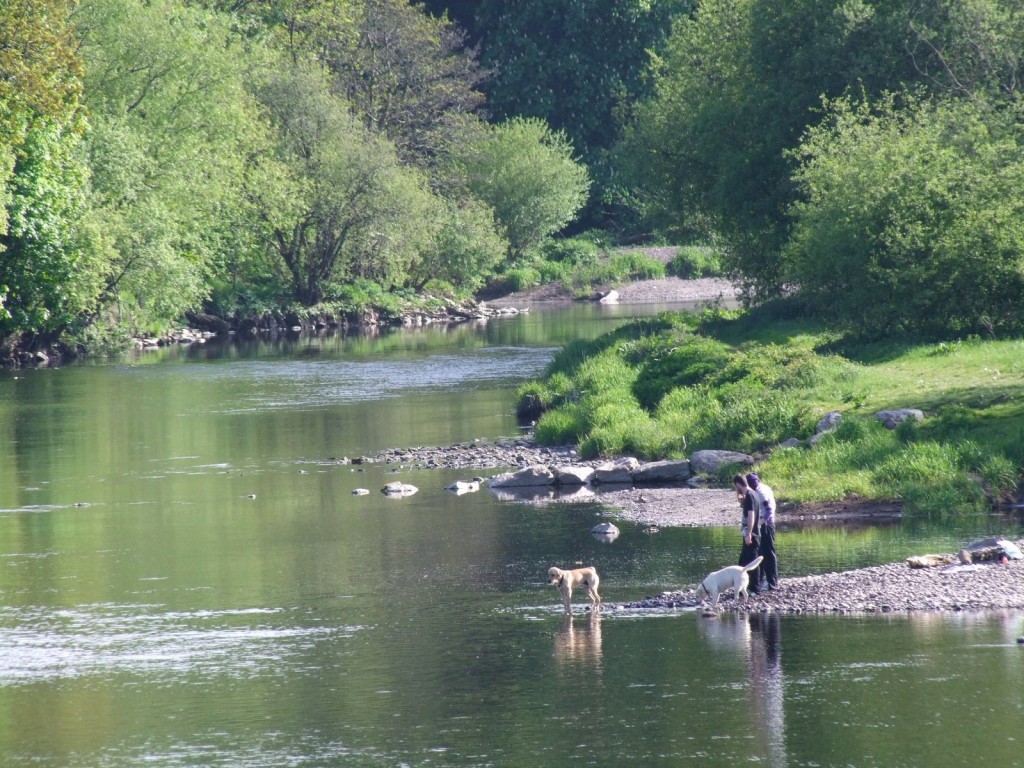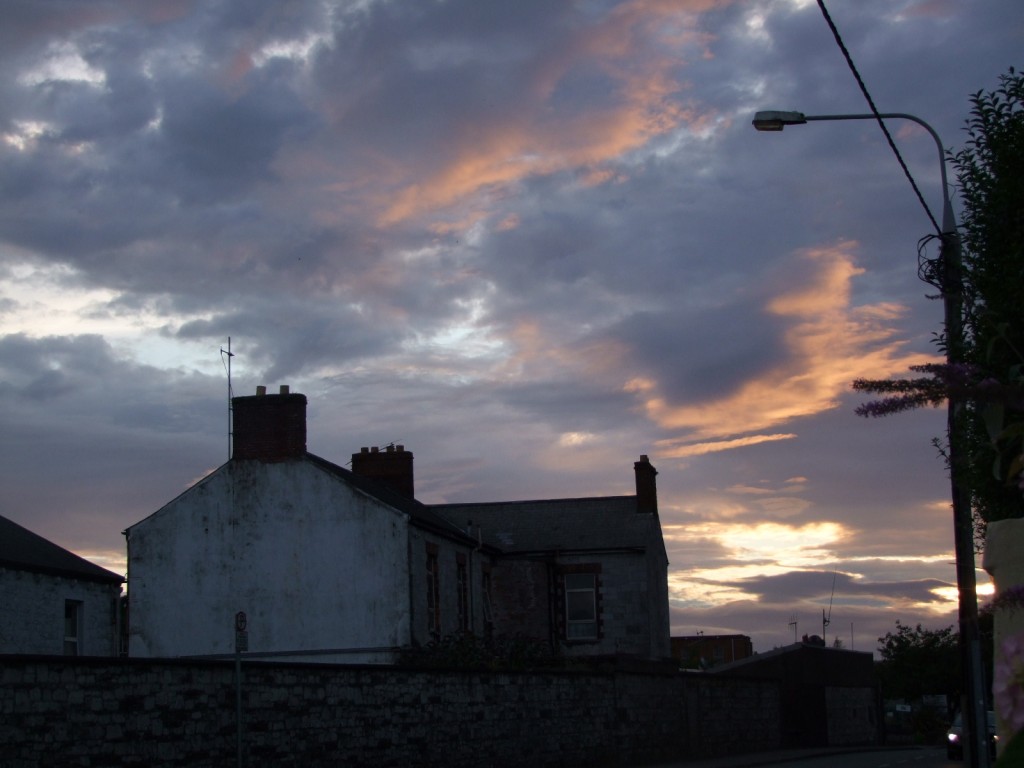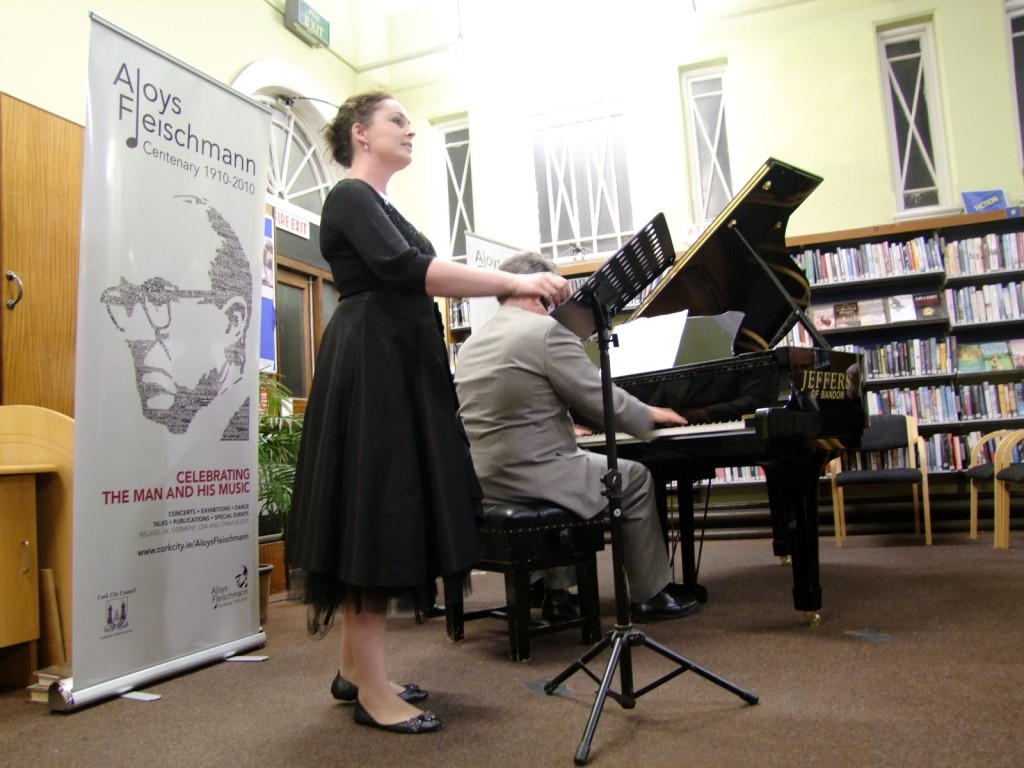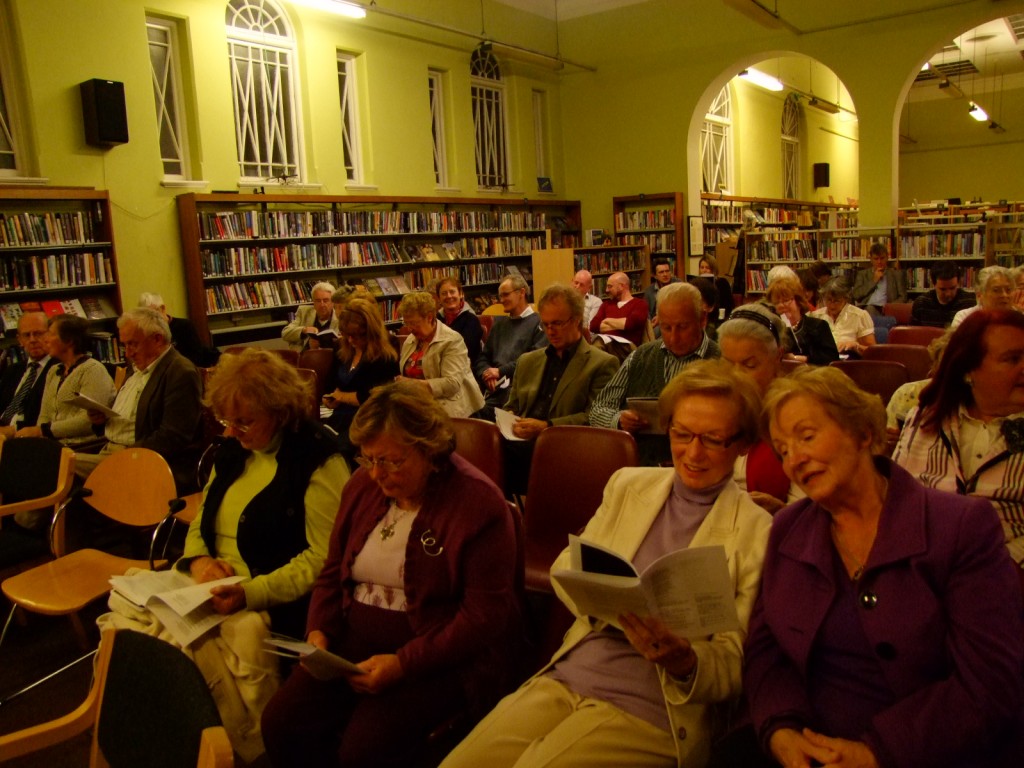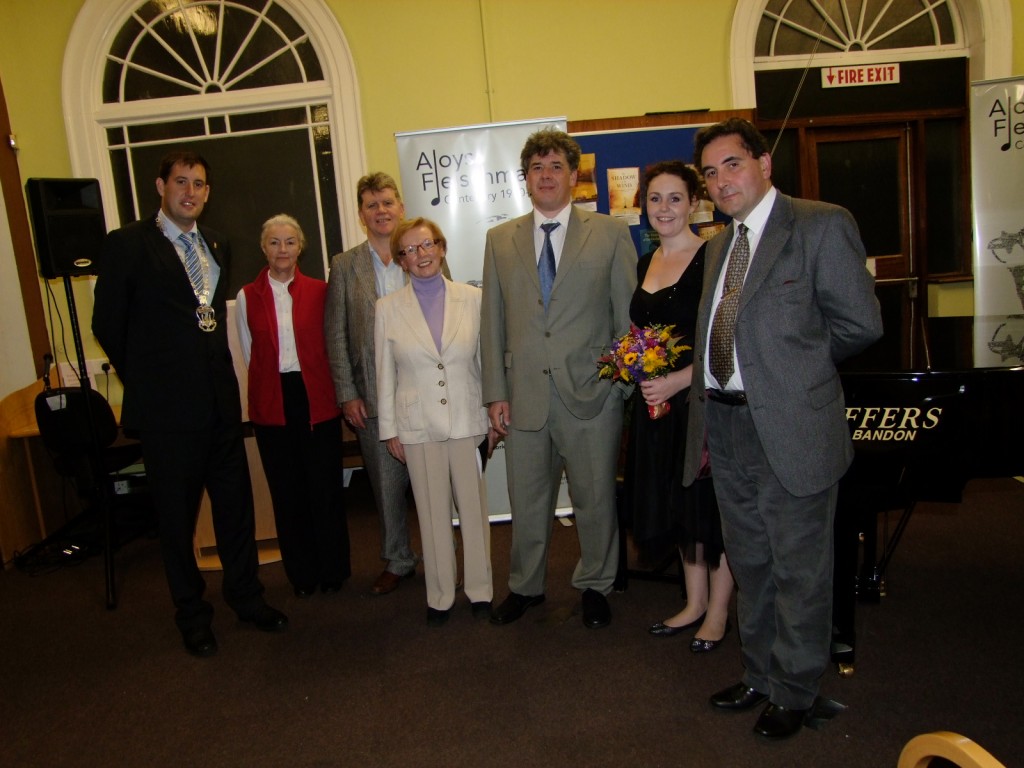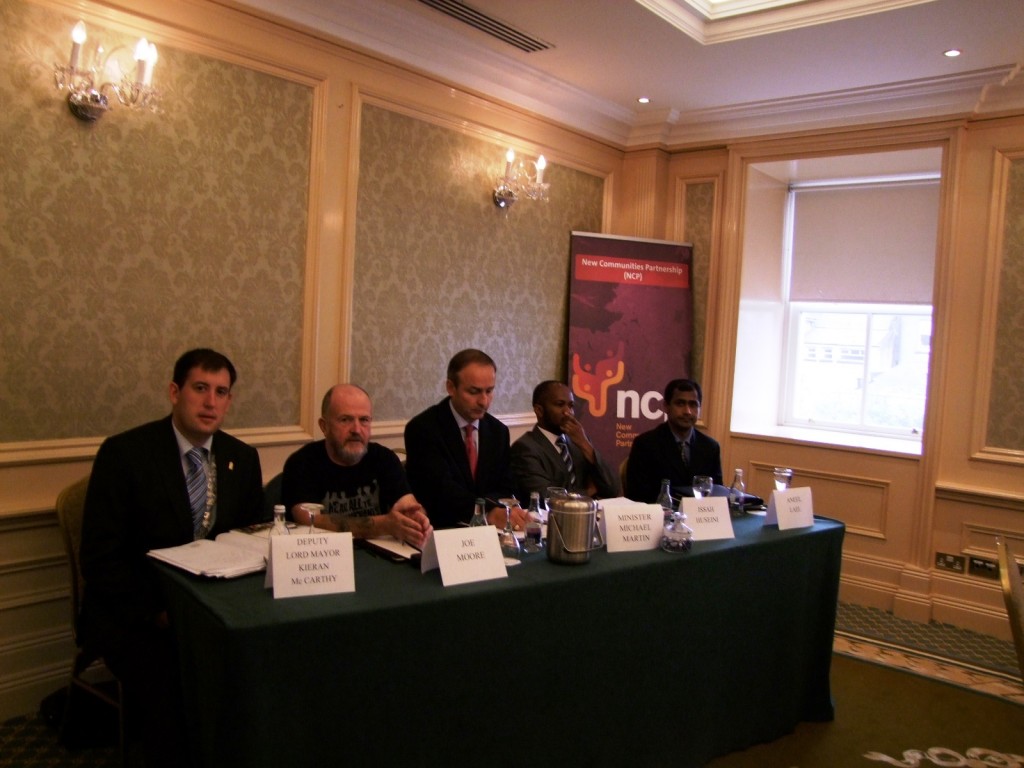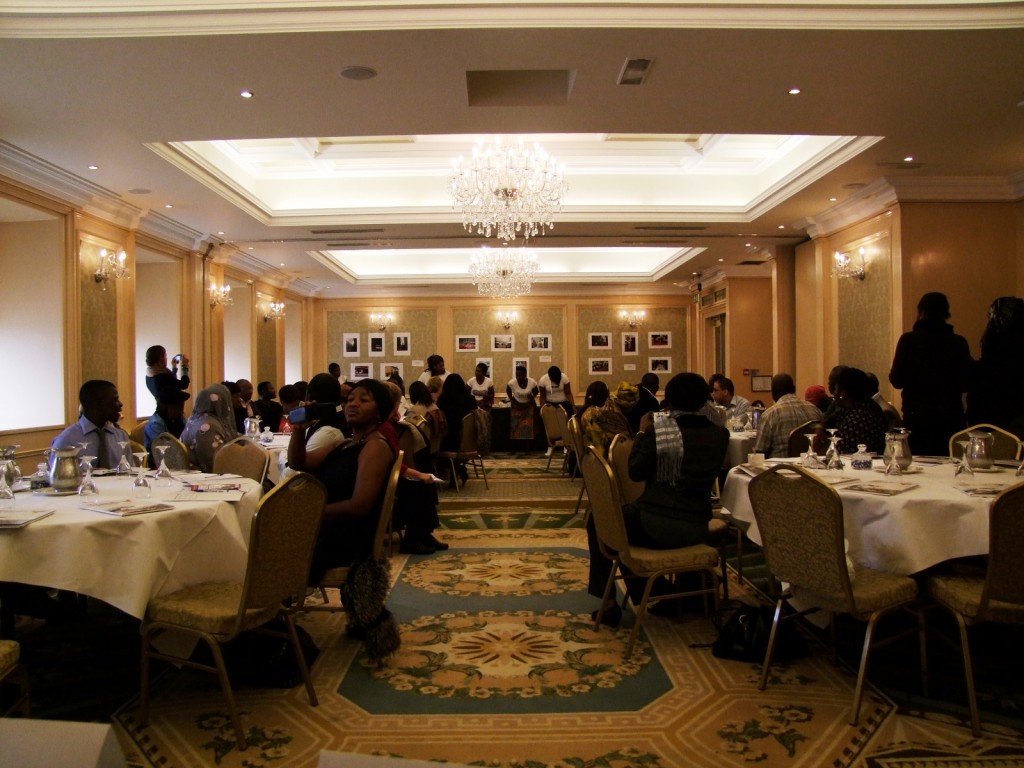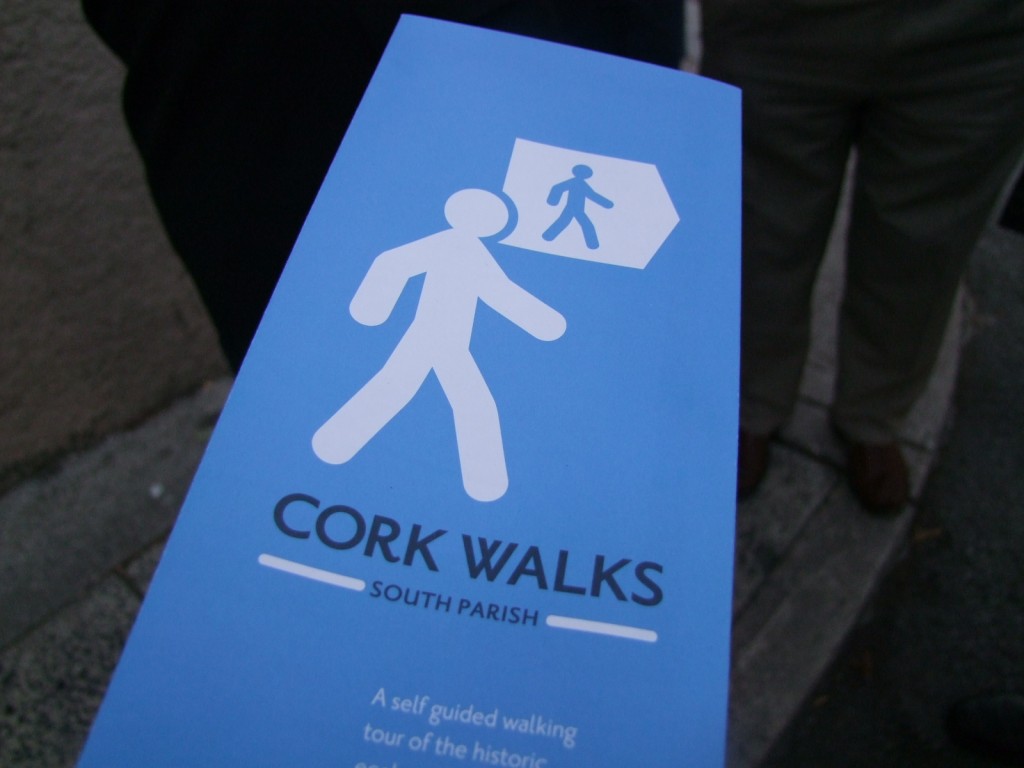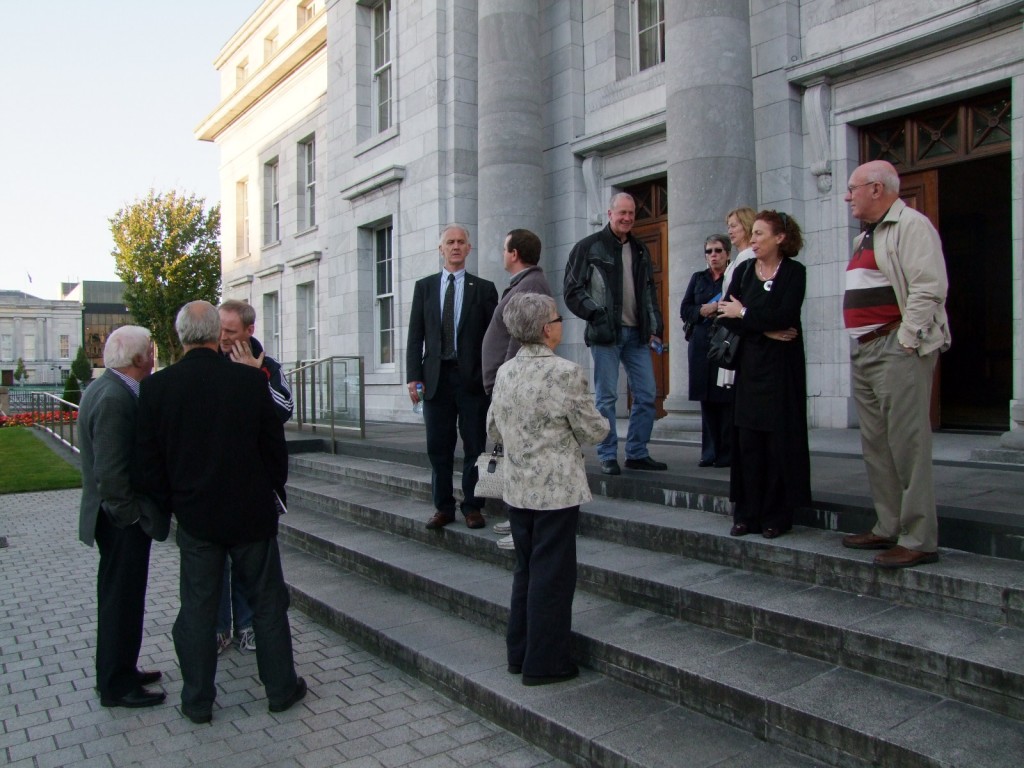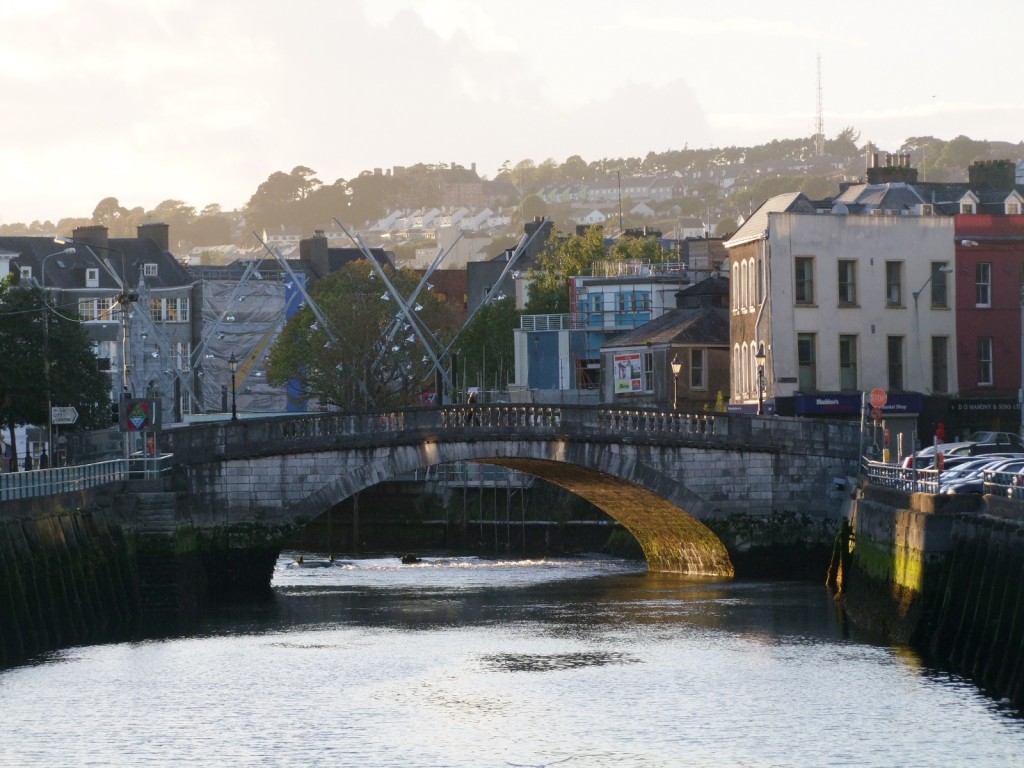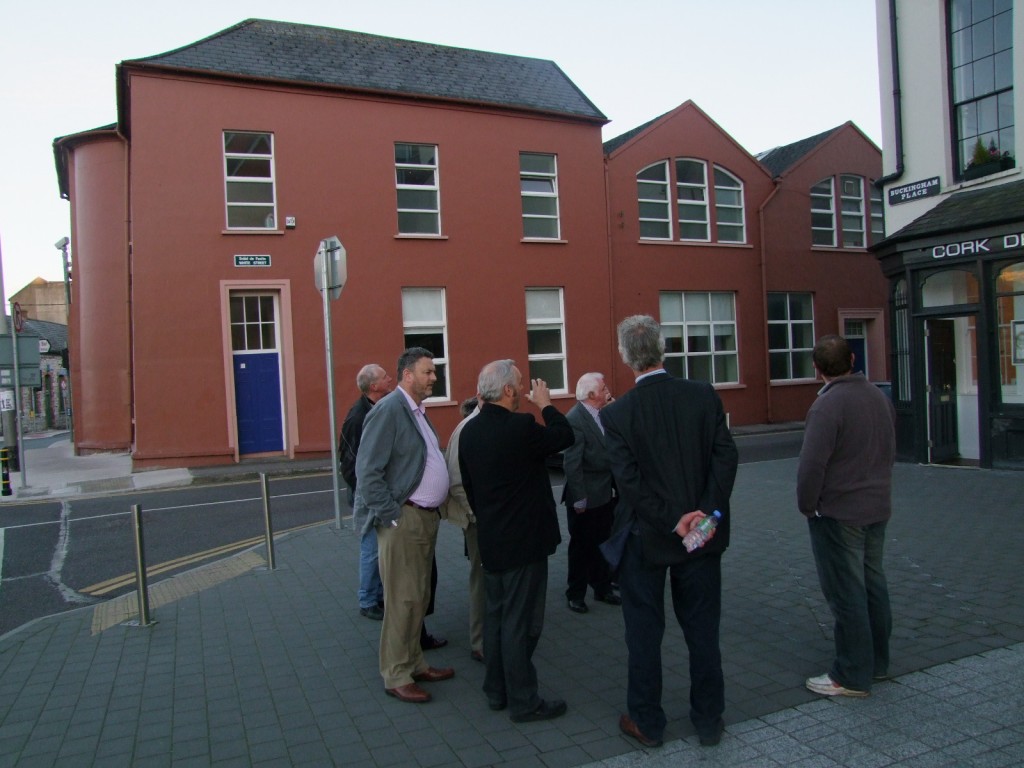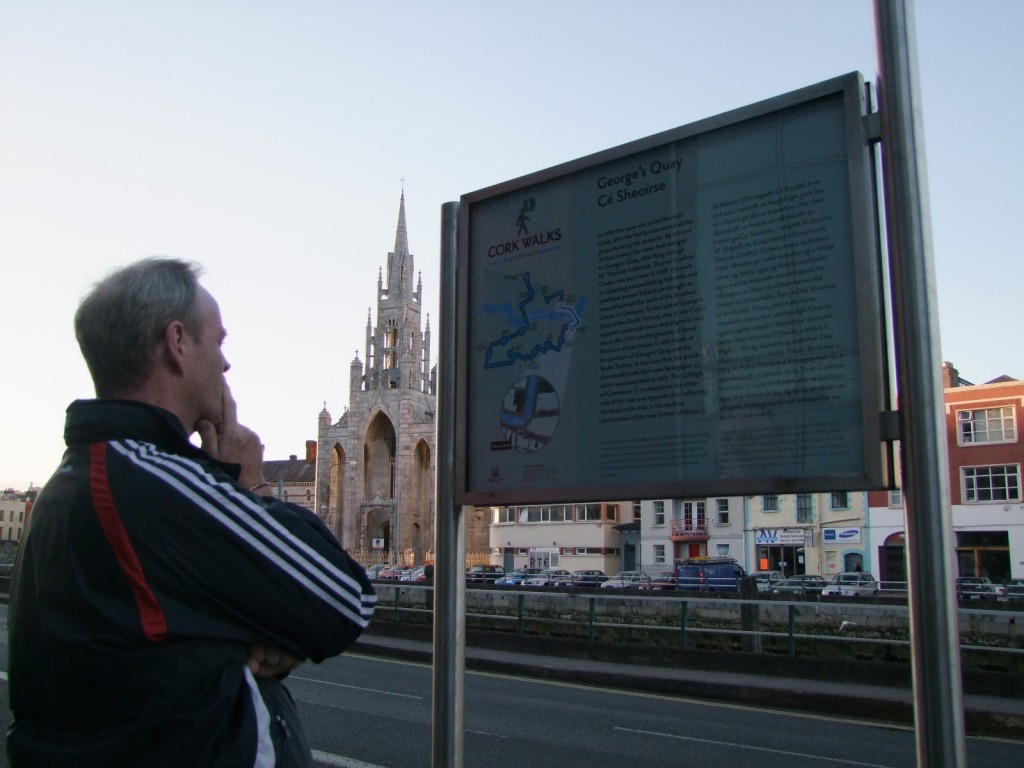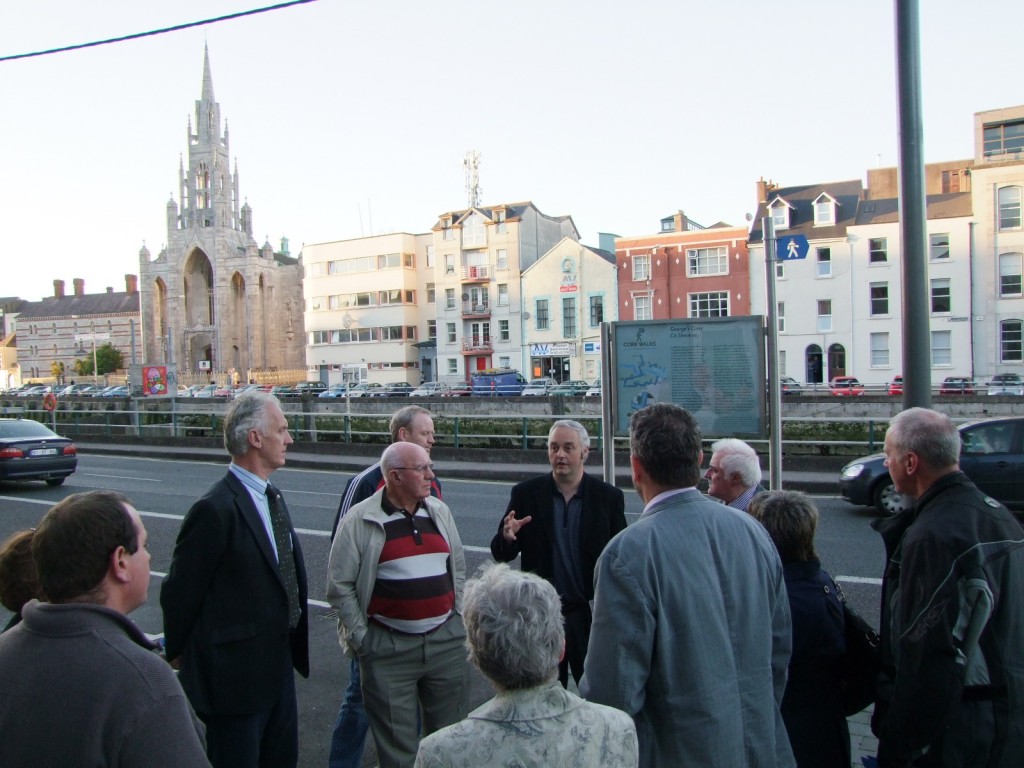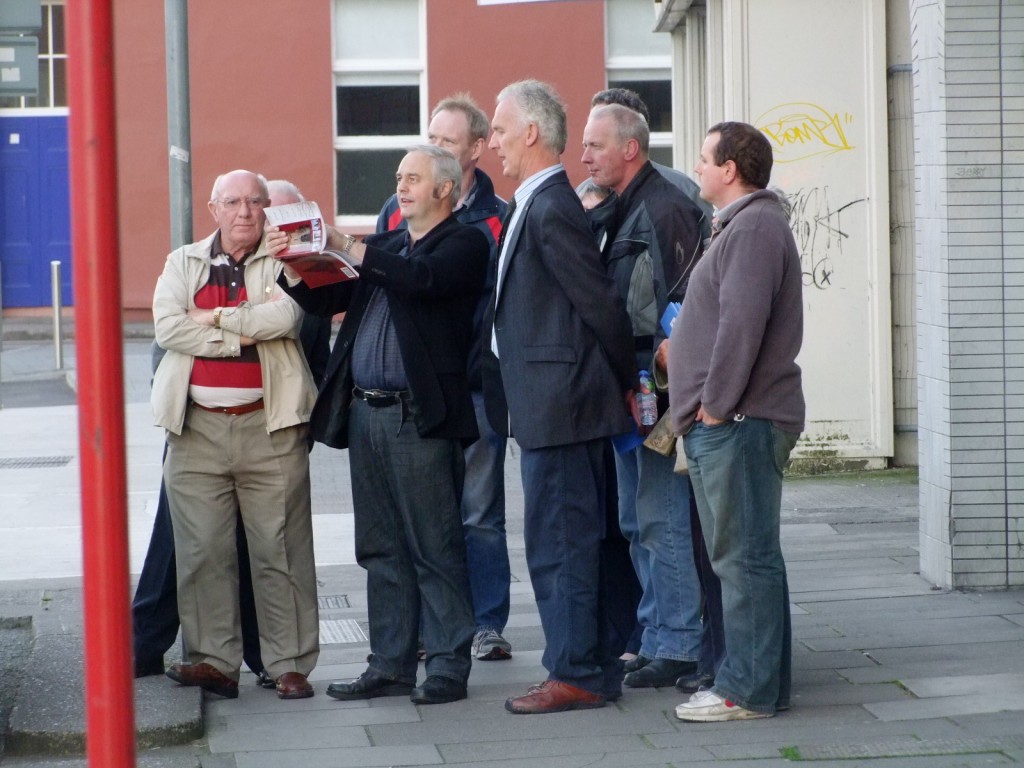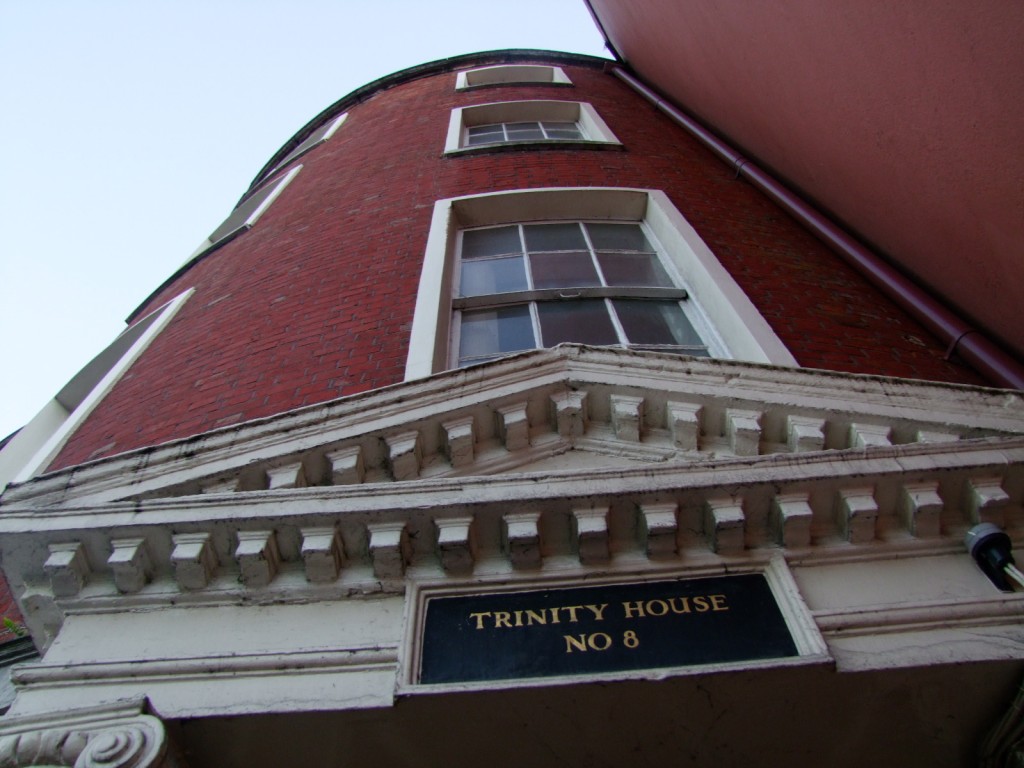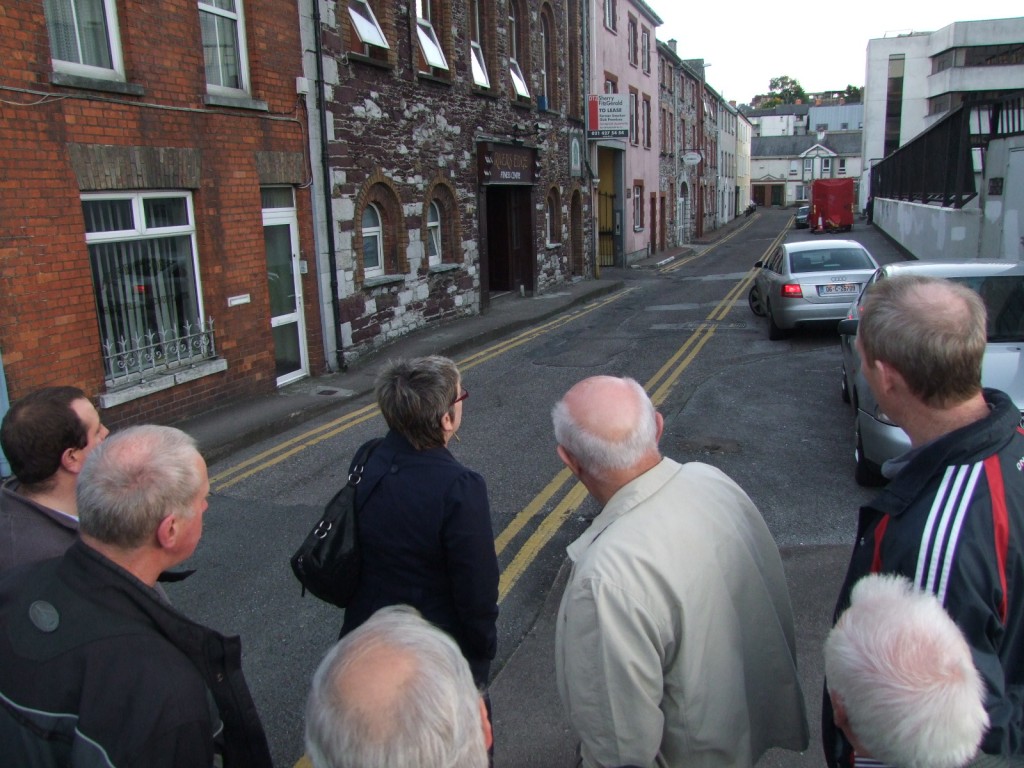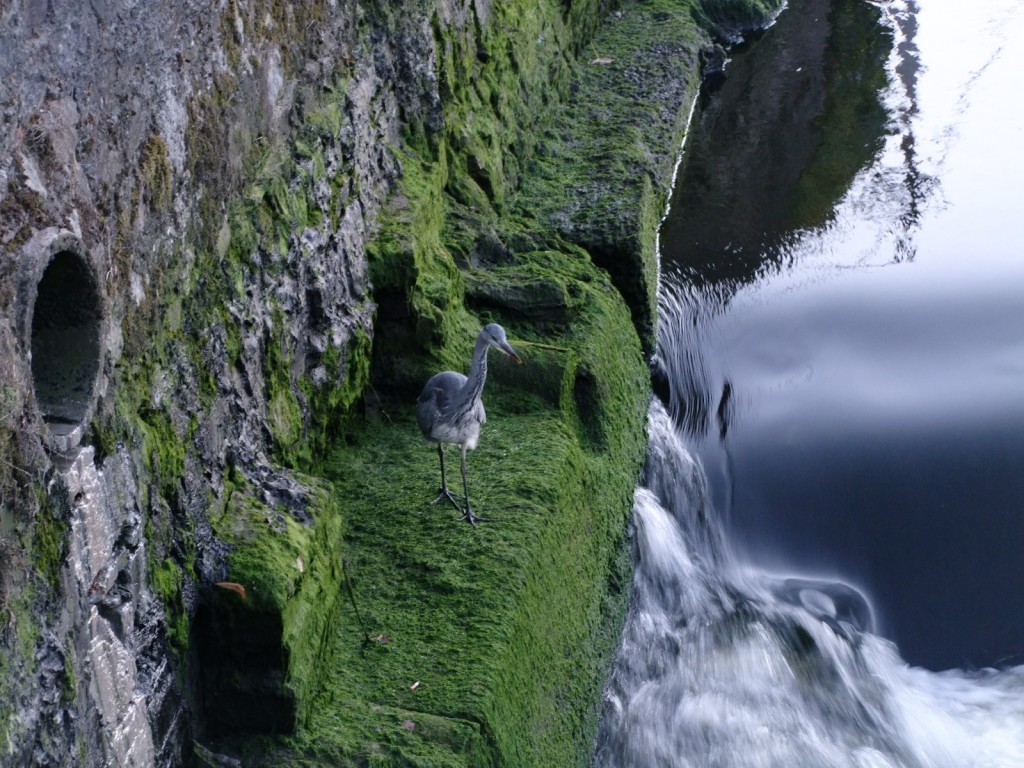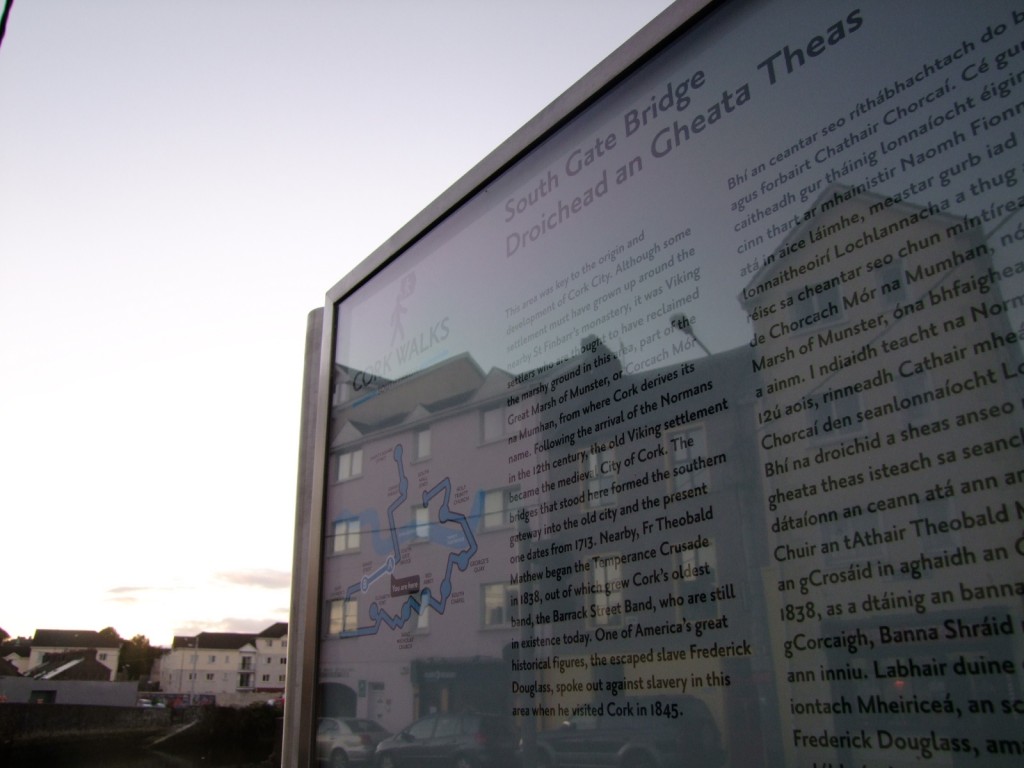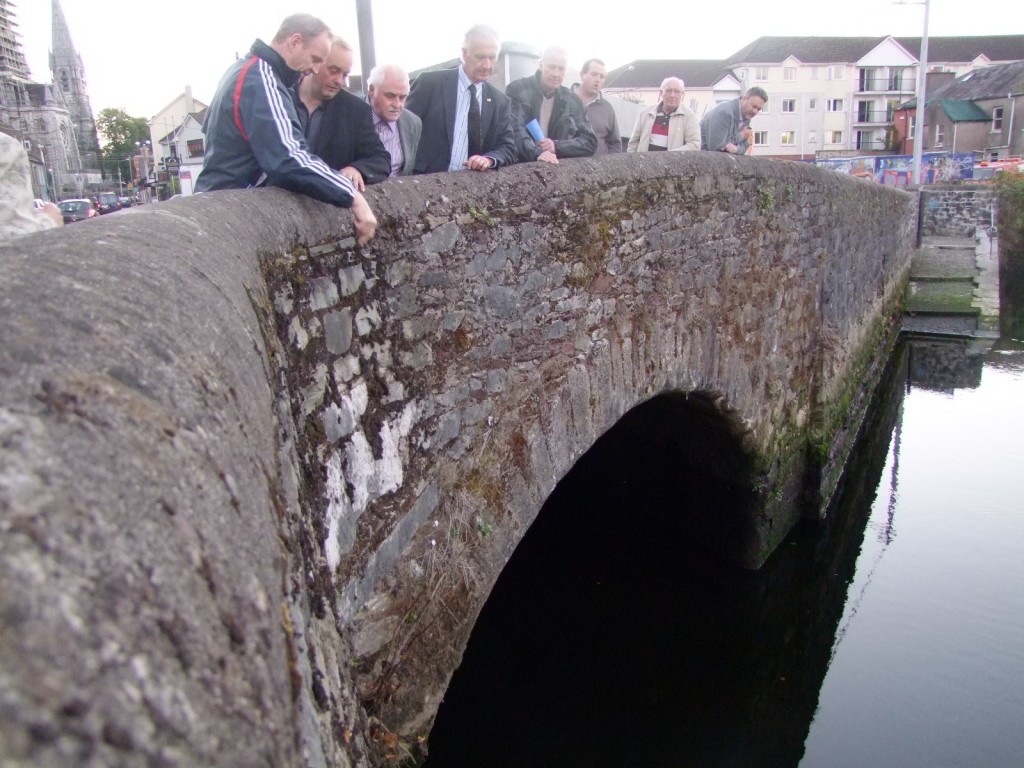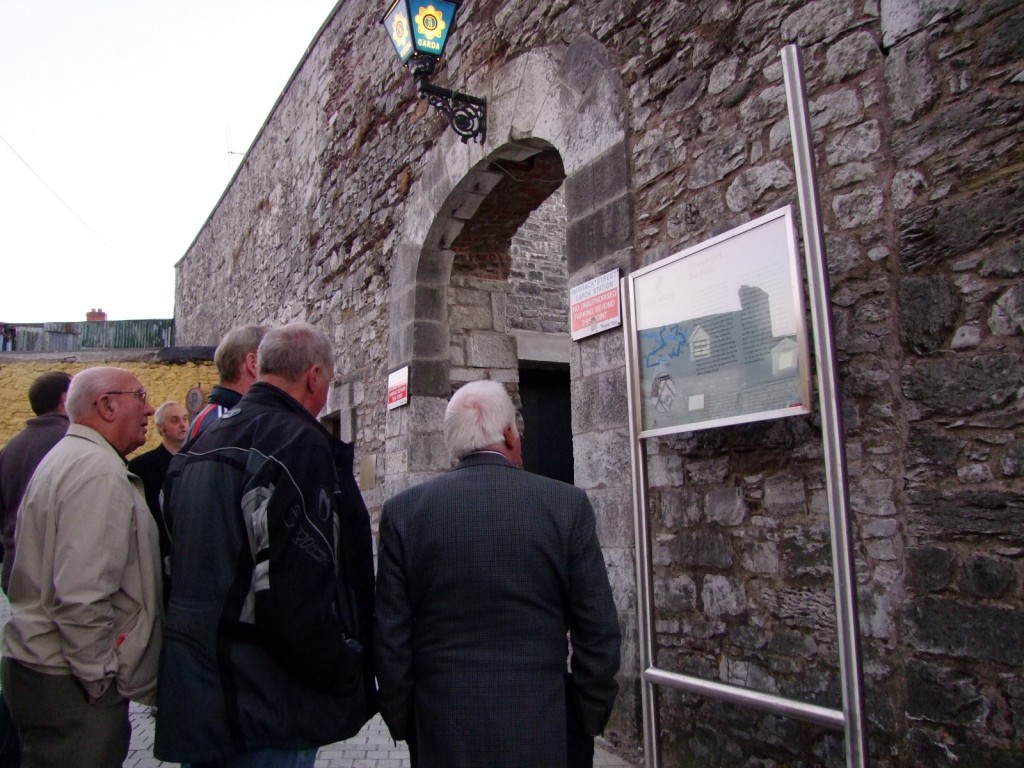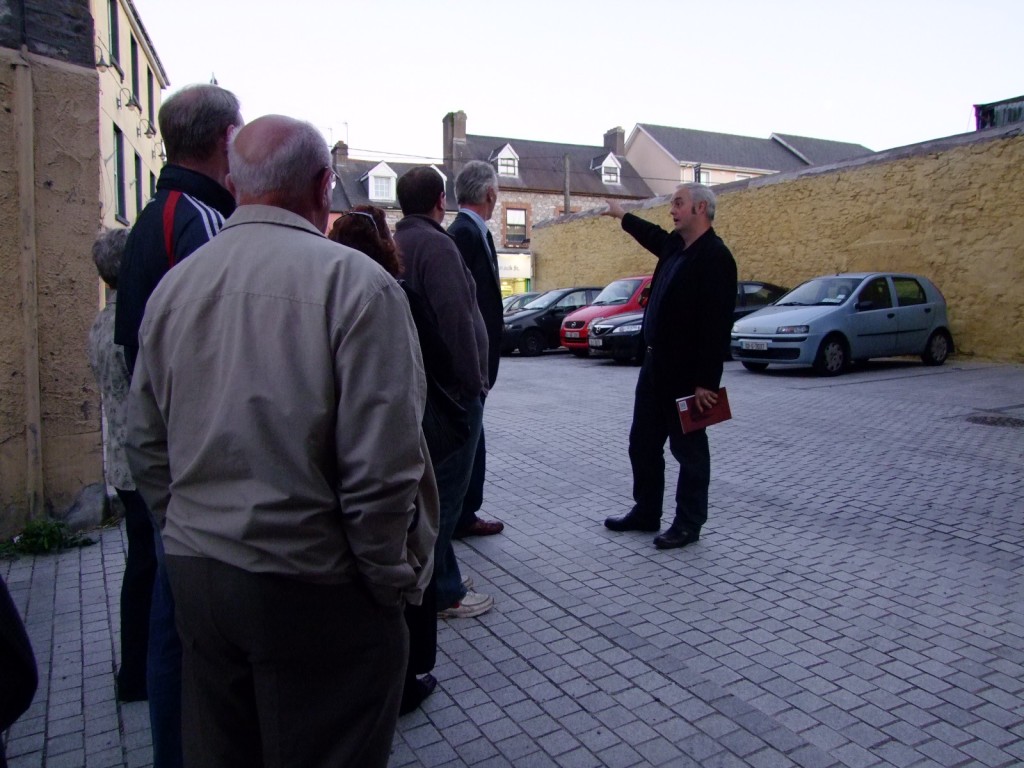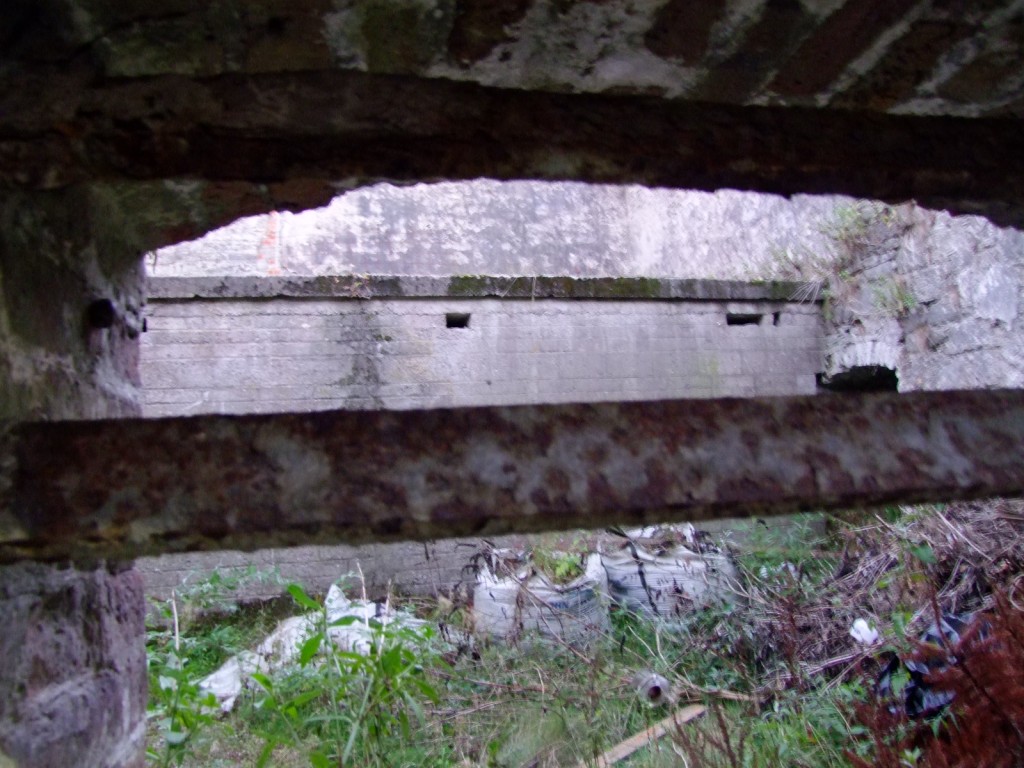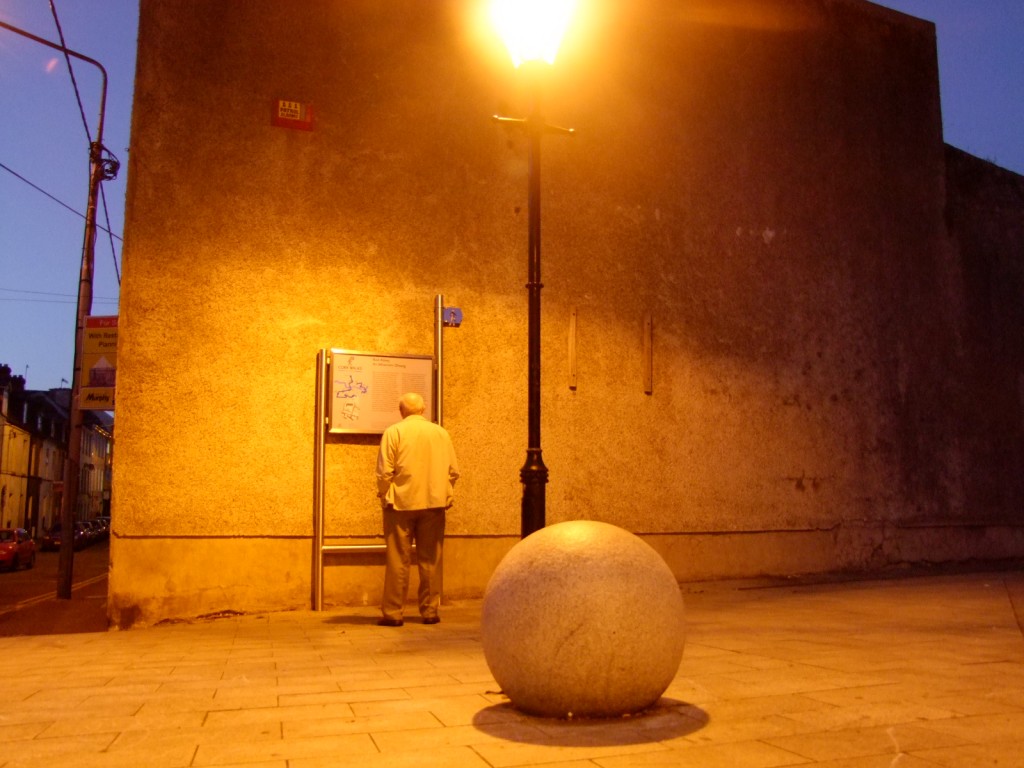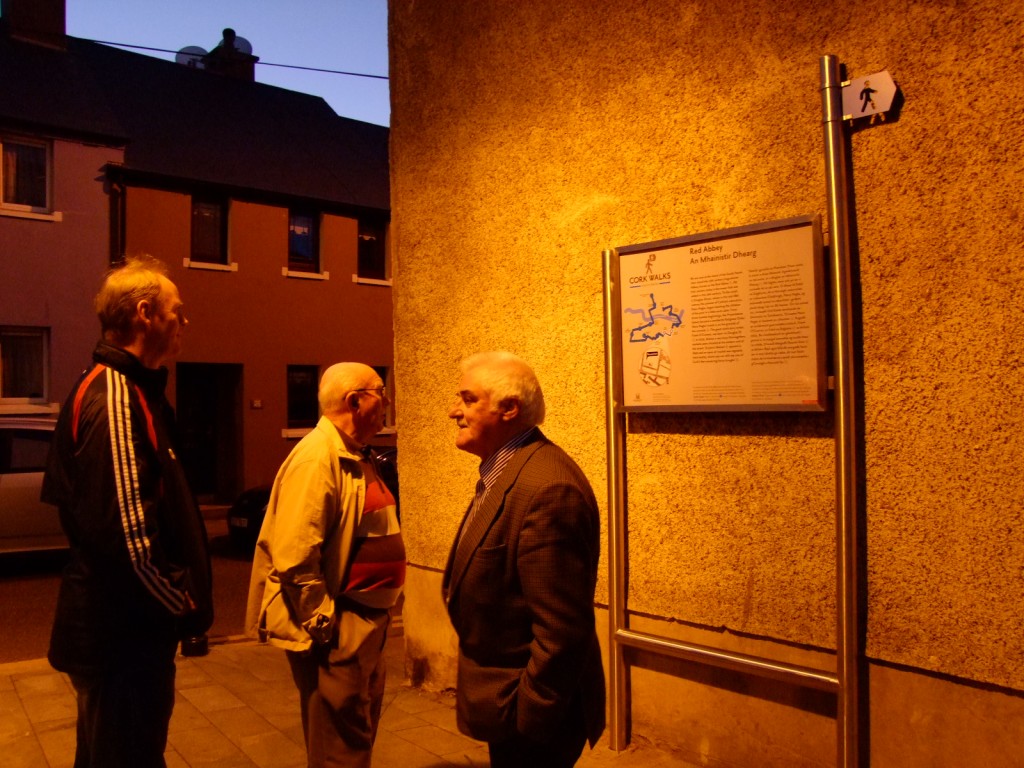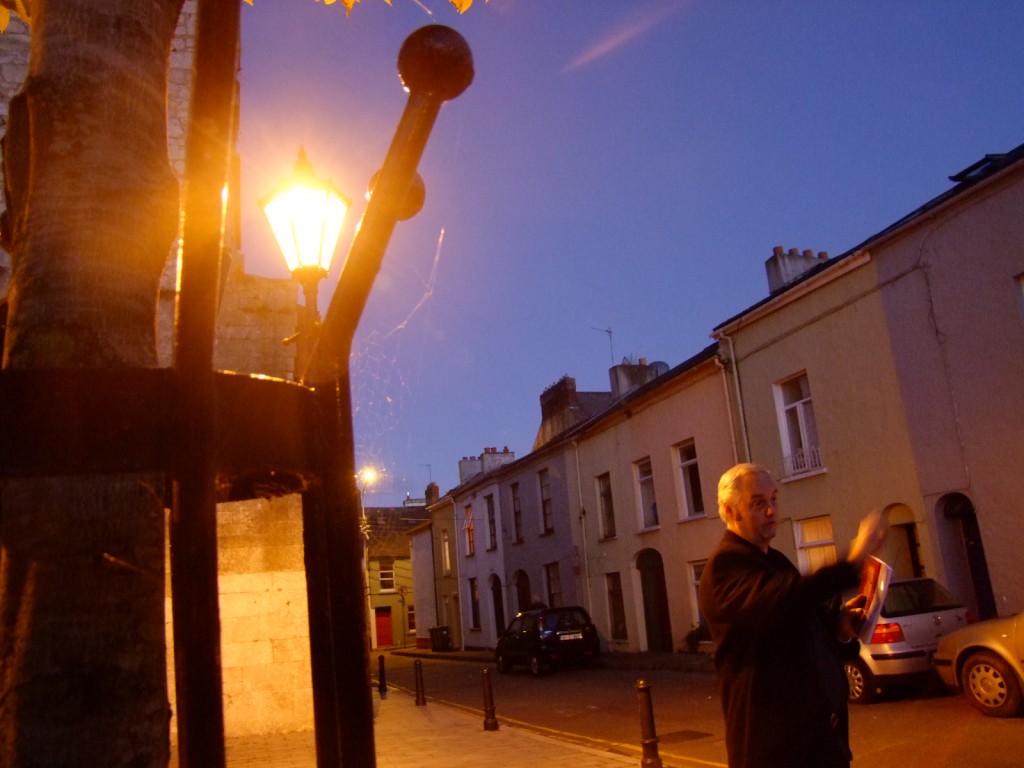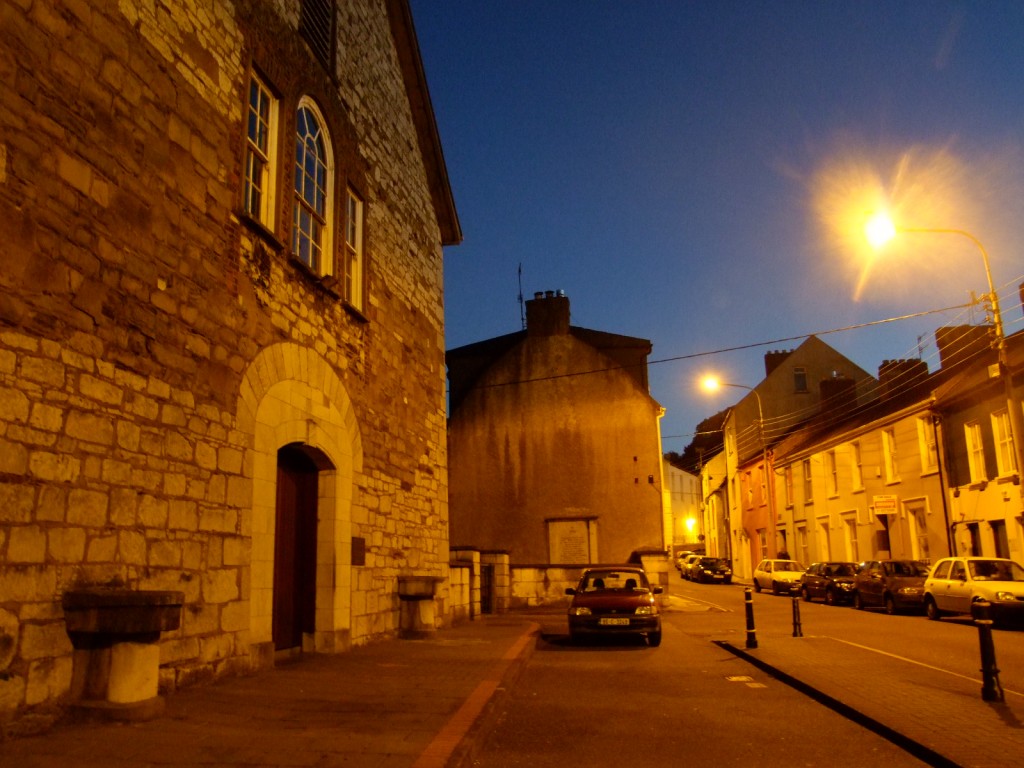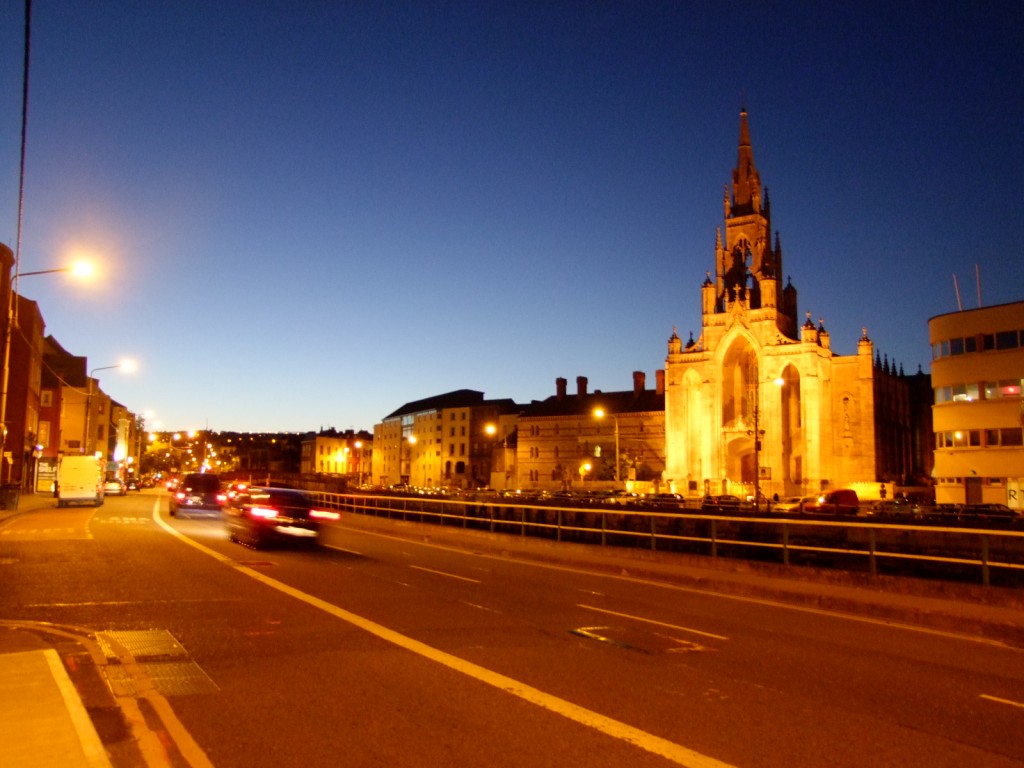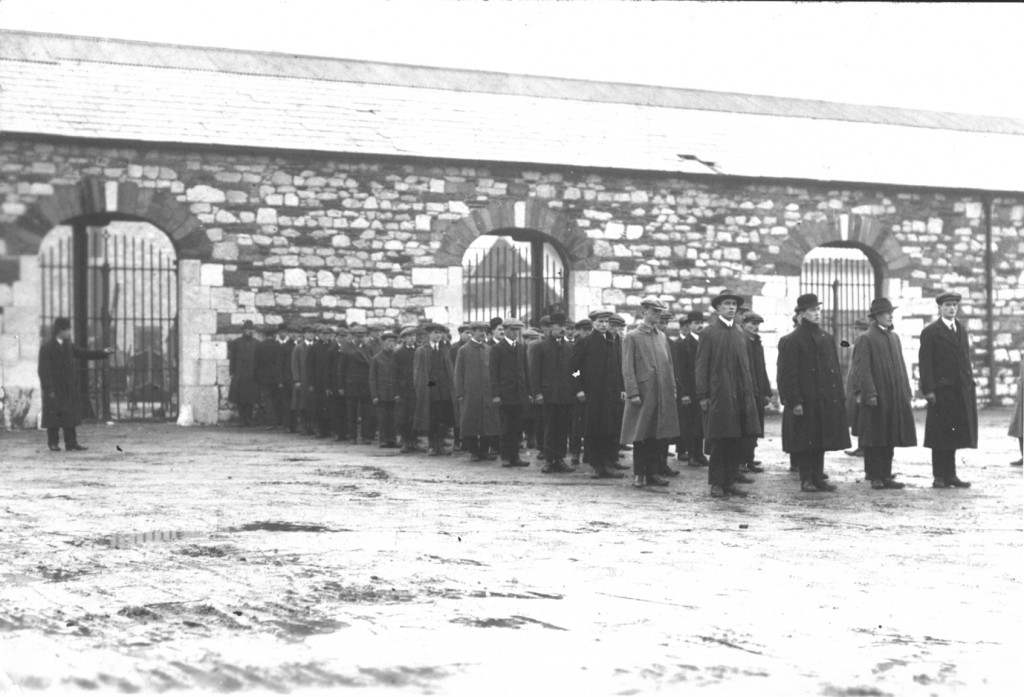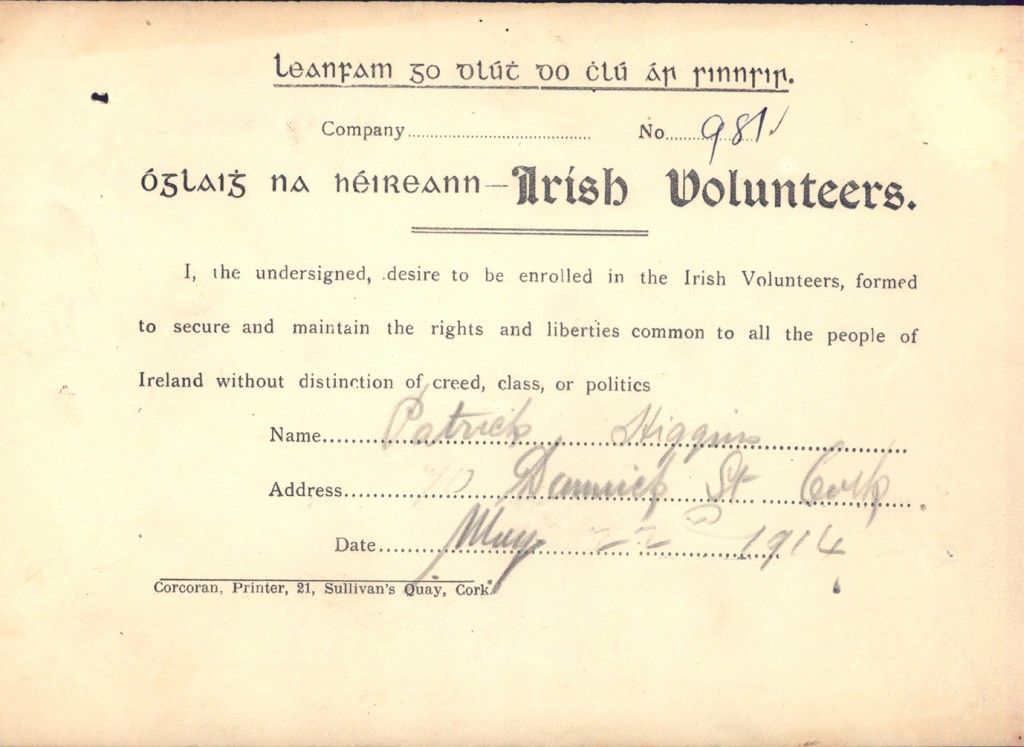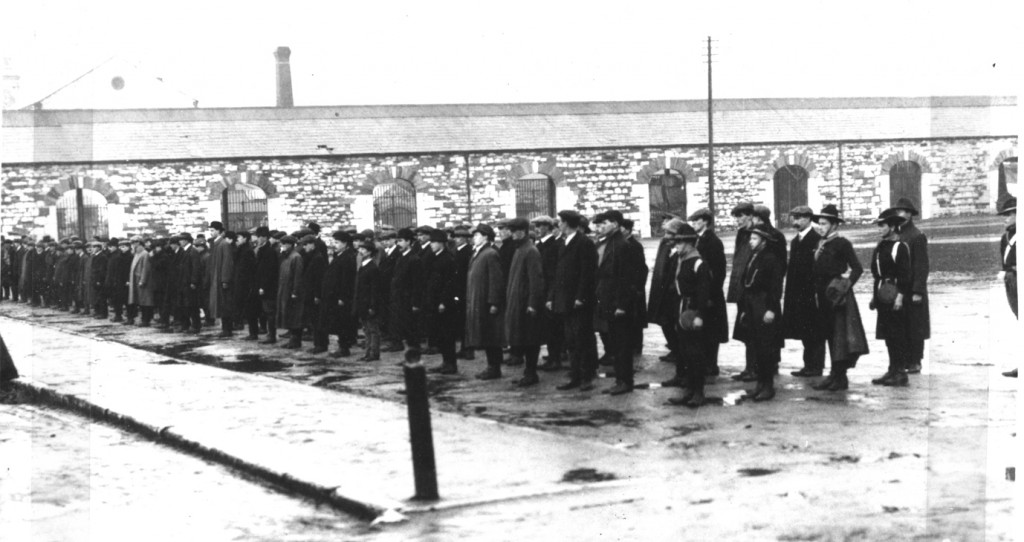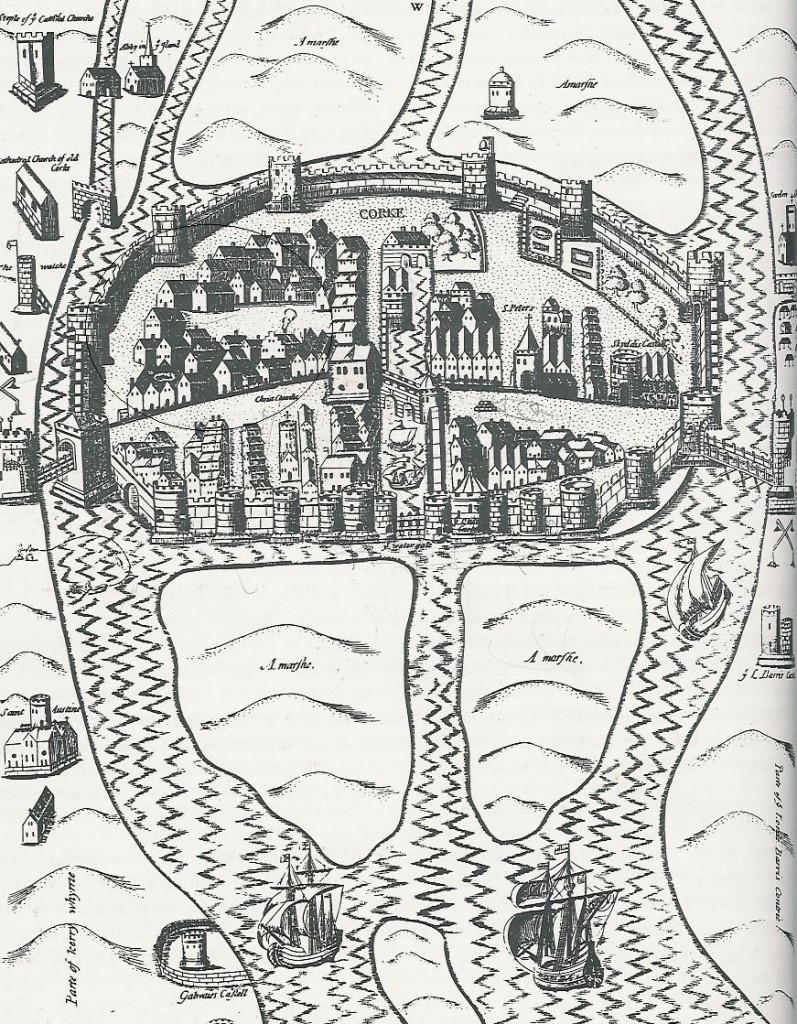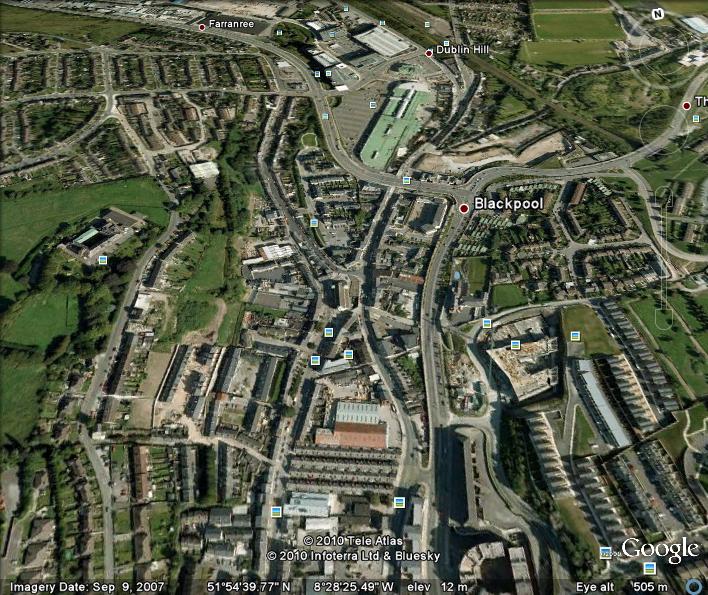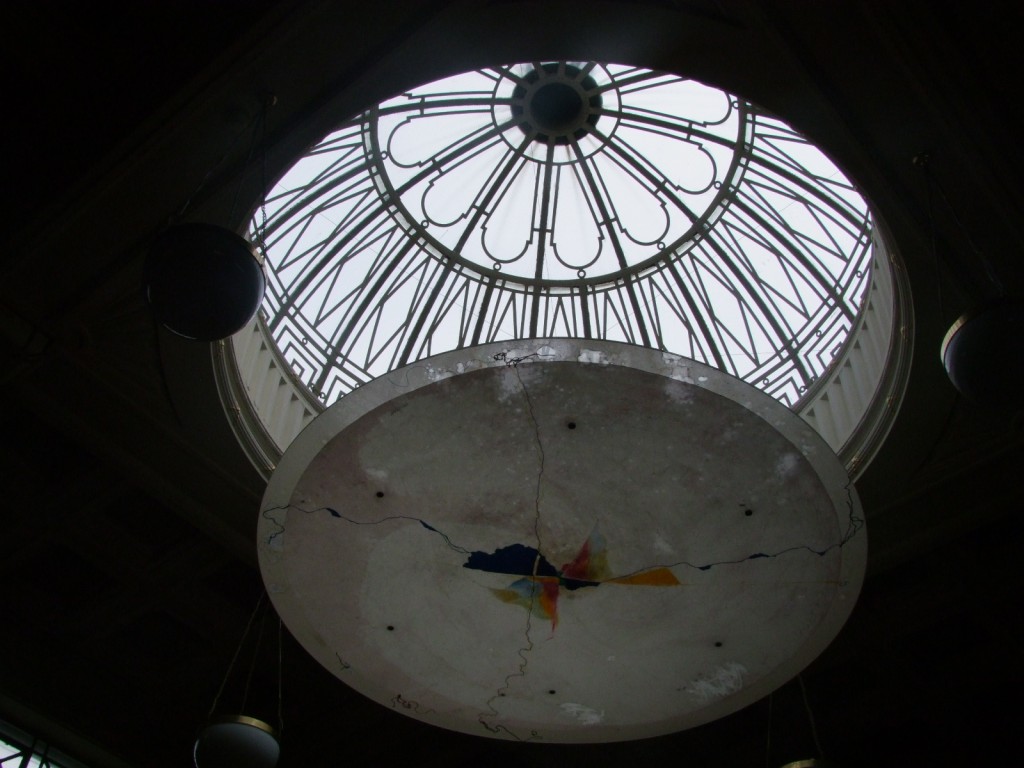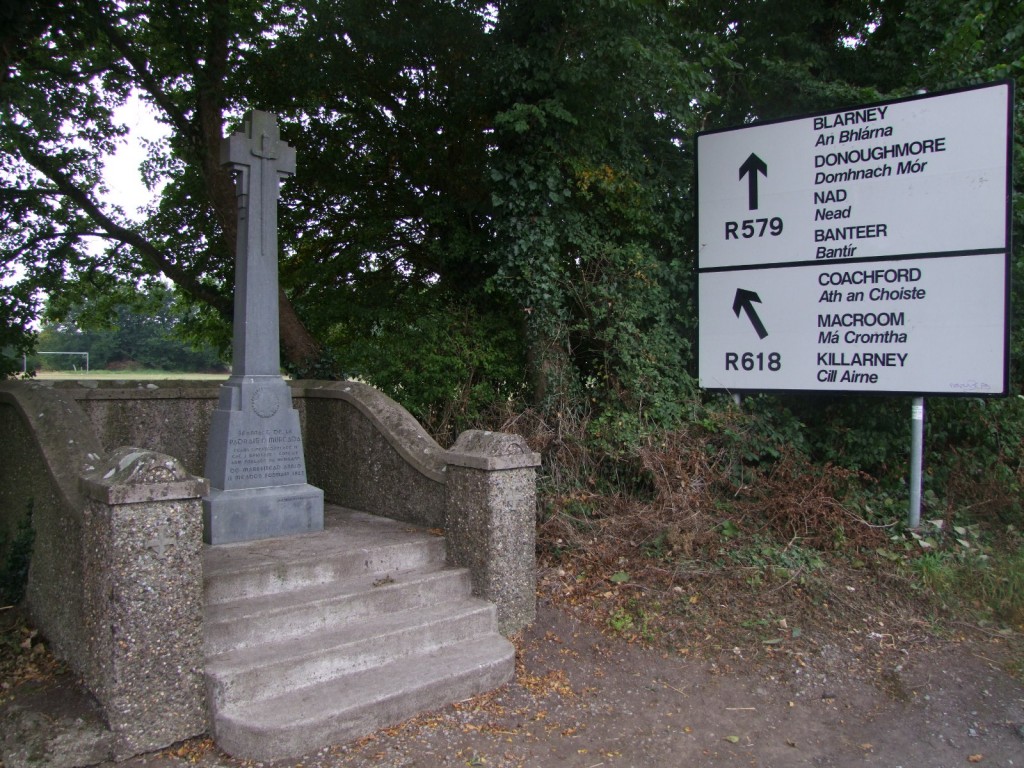
Kieran’s Our City, Our Town Article,
Cork Independent, 23 September 2010
In the Footsteps of St. Finbarre (Part 229)
The Protection of Ireland
“Sir-I would suggest to have the rosary said in every Irish home for the blessing of peace. If we cannot get it any other way, let us hope to obtain it by prayer; not much use in blaming any side, as there is nothing like unity, let us hope God will protect Ireland, [from] An Irish Mother (Cork Examiner, Tuesday morning, 12 September 1922, p.6)”.
Sitting unassuming on a busy road at Leemount lies the Patrick Murphy Civil War memorial. It stands adjacent a junction of roads, one that takes the traveller into the heart of Inniscarra and the other to Blarney. Completed by Seamus Murphy, Cork’s famous sculptor, the meaning of this memorial seems to be silently disappearing. The greyness of the monument seems to point to another dark age of Ireland’s history the Irish Civil War (June 1922-May 1923). Ireland’s present political landscape is still haunted by the war.
Arising out the Anglo Irish treaty of December 1921, the outbreak of the Civil War forced pro- and anti-treaty supporters to choose sides. Supporters of the treaty came to be known as “pro-treaty” or “Free State Army”, legally the “National Army”, and were often called “Staters” by their opponents. The latter called themselves “Republicans” and were also known as “anti-treaty” forces, or “Irregulars”, a term preferred by the Free State side. Perhaps the most harrowing history to read is the argument that the Civil War caused 4,000 deaths between the two opposing sides. It is generally claimed in Irish history that the Civil War may have claimed more lives than the War of Independence against Britain that preceded it, and left Irish society divided and embittered for decades afterwards.
August and September 1922 saw widespread attacks on Free State forces in the territories they had occupied in the July–August offensive, inflicting heavy casualties on them. Commander-in-Chief Michael Collins was killed in an ambush by anti-treaty Republicans at Béal na mBláth, near his home in County Cork, on 22 August 1922. Collins’ death increased the bitterness of the Free State leadership towards the Republicans and probably contributed to the subsequent descent of the conflict into a cycle of atrocities and reprisals. Arthur Griffith, the Free State president had also died of a brain hemorrhage ten days before, leaving the Free State government in the hands of W. T. Cosgrave and the Free State army under the command of General Richard Mulcahy.
Arising out of the tensions of the day, on Tuesday Morning, 12 September 1922, (p.6), the Cork Examiner noted of the following incident at Leemount.
“The shooting occurred at Leemount, just at the cross roads and practically at the door of the café, which stands just where the permanent way of the Cork and Muskerry railway turns off the road, on the way up to Healy’s Bridge. About ten o’clock on Saturday morning a group of armed Irregulars were waiting here with what object is not clear. The fact that on the previous day, the Muskerry tram was held up and the mails raided suggests that another raid was their object, but this is purely a matter of conjecture.
A National soldier in uniform, accompanied by a friend in civilian clothes [Patrick Murphy], who was also apparently a member of the National Army, came along on bicycles from the direction of Carrigrohane. They do appear to have been on duty, but merely enjoying a short spin into the country at the time, whom they had passed the bridge crossing the Lee, which has been almost destroyed, and were nearing the cross roads at Leemount, when they were challenged by the Irregulars who called on them to halt. The reply of the two cyclists to this order was to draw revolvers and open fire on the “hold-up” party.
The Irregulars then opened fire and wounded the uniformed soldier, but not before two of their own party had been hit. What happened next is not quite clear, but the Irregulars disarmed the two cyclists, to whom however, they did not attempt to do further harm. Medical assistance was procured and the wounds of the three injured men were temporally dressed. One of the Irregulars, was seriously wounded in the region of the hip. The soldier had a flesh wound which was not serious, while the third man had been shot through the forearm. What became of the soldier and his friend is entirely unknown. They were both apparently taken off by the Irregulars, and their whereabouts are still and absolute mystery.”
More next week…
Captions:
558a. Patrick Murphy Civil War Memorial, Leemount, September 2010 (pictures: Kieran McCarthy)
558b. River Lee upstream before Leemount Bridge, Autumn 2010
